Berlin galleries, project spaces, studios... June 2010
Sat, Jun 19 2010 Alexej Meschtschanow at Klemm's
Alexej Meschtschanow at Klemm's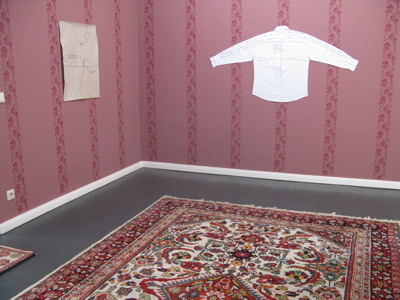
Jimmie Durham at Barbara Wien Wilma Lukatsch

'Rethinking Location' at Sprüth Magers

Kirstine Roepstorff at Peres Projects
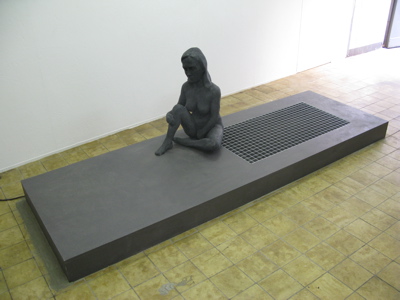
Heike Kabisch at Chert

Christina Mackie at Supportico Lopez
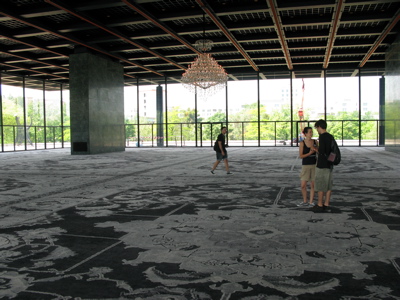
Rudolf Stingel at the Neue Nationalgalerie
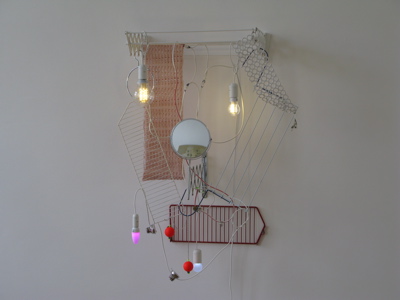
Haegue Yang at Barbara Wein Wilma Lukatsch Schöneberger Ufer space
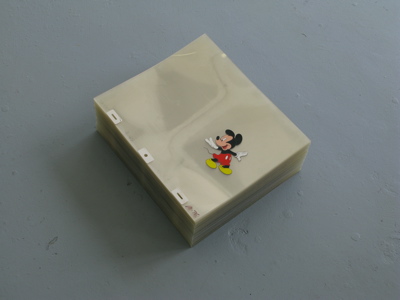
Rubén Grilo at Maribel López Gallery

Michael Buthe at Reception
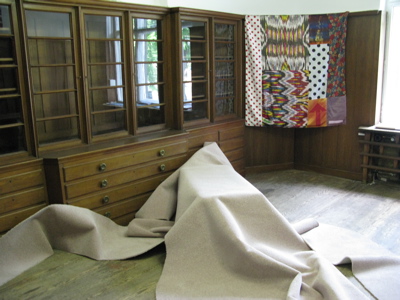
Mehr Teppich / More Carpets at Isabella Bortolozzi
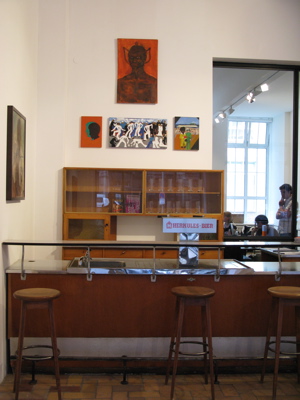
'Self-Consciousness' at VW VeneKlasen/Werner

Archive Kabinett
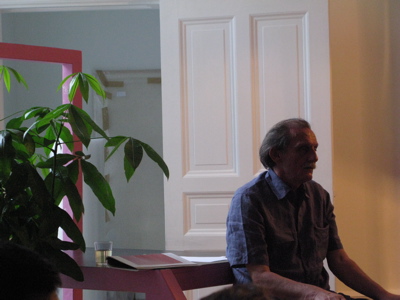
Mladen Stilinovic talk at Salon Populaire

Studio visit with Libia Castro & Ólafur Ólafsson
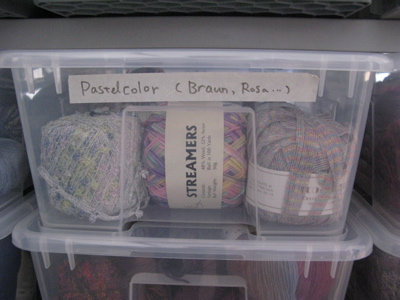
Studio visit with Haegue Yang
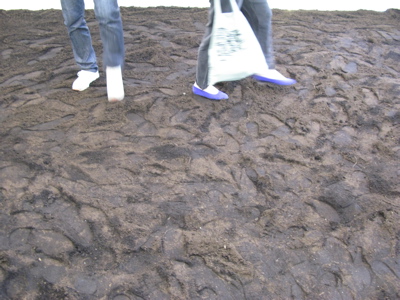
Lara Favaretto at Klosterfelde
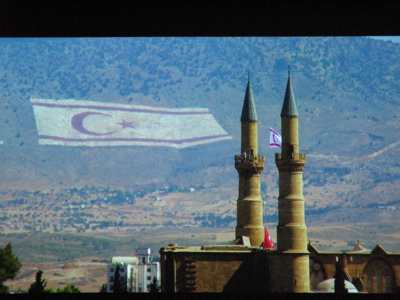
John Smith at Tanya Leighton Gallery
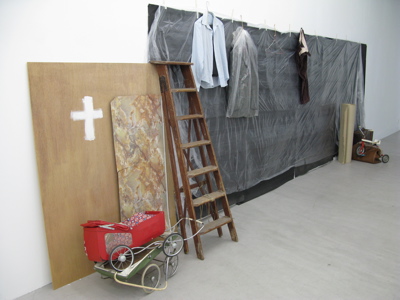
Vlassis Caniaris at Galerie Giti Nourbakhsch
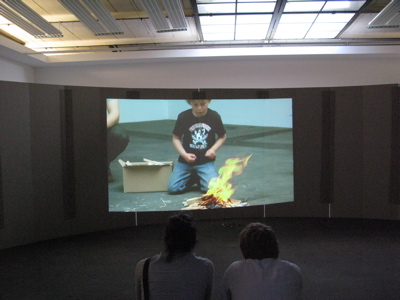
Tue Greenfort at Johann König

Jessica Rankin and Sara Barker at Carlier | Gebauer
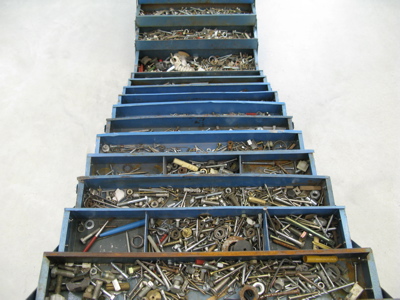
Sofia Hultén at Konrad Fischer Galerie
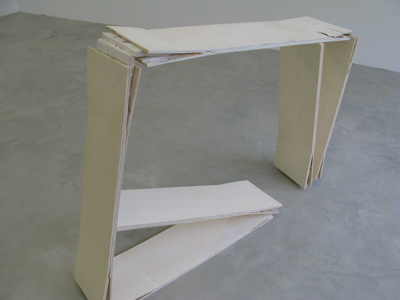
'Voices from Silence Truths Unveiled by Time' at Galerie Opdahl
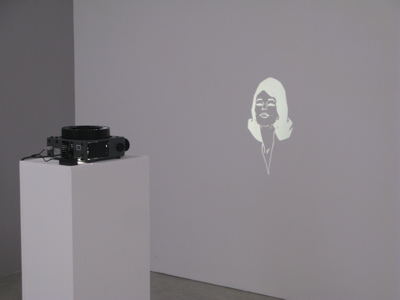
'Minimum Maximum' at Zak | Branicka
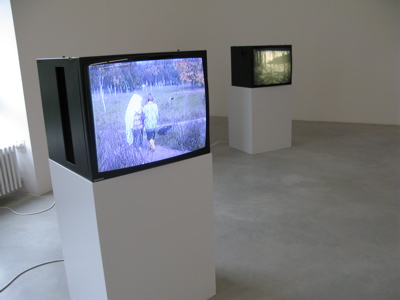
Ion Grigorescu at Galerija Gregor Podnar
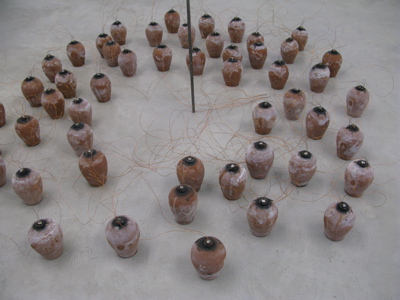
Christian Andersson at Galerie Nordenhake
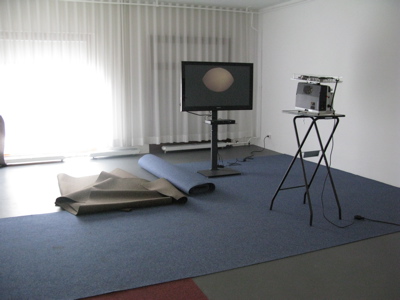
Simon Dybbroe Møller at Galerie Kamm
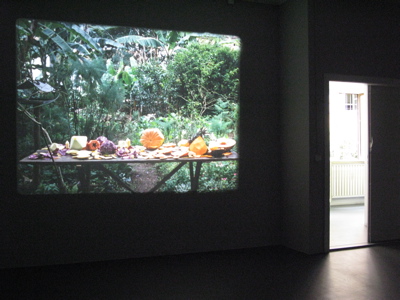
João Maria Gusmão & Pedro Paiva at Galerie Kamm
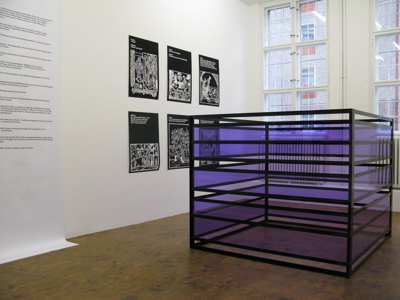
Liam Gillick at Esther Schipper
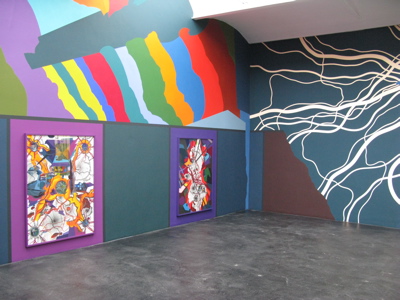
Franz Ackermann at Neugerriemschneider
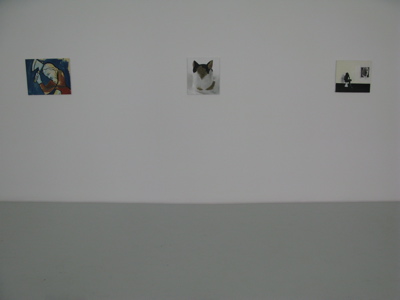
Wilhelm Sasnal at Johnen Galerie

Videodrome at Autocenter
All photos: Latitudes | www.lttds.org
Overview of the 53rd International Art Exhibition, Venice Biennial: 'Making Worlds // Fare Mondi'
Sun, Jun 14 2009Daniel Birnbaum's 'Making Worlds' felt less melancholic though still very much in keeping with his recently-curated '50 Moons of Saturn', the 2nd Turin Triennial (see post 10 November 2008). Both exhibitions shared several artists (Ulla von Brandenburg, Koo Jeong-A, Pietro Roccasalva, Spencer Finch, Ceal Floyer, Lara Favaretto, Pascale Marthine Tayou, Haegue Yang, Paul Chan, Tomás Saraceno, Wade Guyton, Keren Cytter and Rosa Barba), whereas the Venice show included several students (including Att Poomtangon) or professors (Simon Starling, Wolfgang Tillmans) from the Birnbaum-directed Staedelschule in Frankfurt, and the support of curator Jochen Volz in the artistic organisation (additional advice was provided by a team of 'correspondents': Savita Apte, Tom Eccles, Hu Fang and Maria Finders). In contrast with the 2007 biennial by Robert Storr it felt less painterly and more sculptural and with a notable lack of 'black boxes' with film and video work.
There seemed to be, however, a certain self-reflexivity concerning the biennale context: several works referred to the winter life of the Giardini venues (Steve McQueen's film in the British Pavilion; Haegue Yang's video in the Korean Pavilion) and the challenge artists face when asked to present work for this type of event. This was most evident in Dominique Gonzalez-Foerster's video in the Palazzo delle Esposizioni (formerly named 'Padiglione Italia'), a touching exorcism of artistic exhaustion. During the last twenty years, she has been asked to participate in the Biennale not less than five times, and she speaks about the pressure of expectation in creating something new every time.
Elsewhere in Venice the Biennial threatened to be overshadowed by the opening of François Pinault’s über-collection hosted in the recently renovated Punta della Dogana (the former customs house). The spectacular triangular building has undergone a speedy renovation by Japanese architect Tadao Ando (see video here), and the inaugural exhibition's sombre atmosphere is much in contrast to the über-kitch displays at Palazzo Grassi.
Without trying to be at all comprehensive (with almost one million square feet of exhibition space, more than ninety artists, seventy-seven national contributions, and forty-four collateral events that seem increasingly impossible) here are some highlights in no particular order of the Giardini (see first slideshow with 107 images) and Arsenale (slideshow above with 52 images):
Roman Ondák’s 'Loop' contribution in the Czech/Slovak pavilion: a walk-through pavilion with a path running from the entrance to the back door that has been landscaped with exactly the same greenery that exists in the Giardini – it was executed with such precision that some visitors asked the artist if his work was the pavilion building itself as they could not find the 'art' anywhere.
Haegue Yang's 'Condensation' (Korea Pavilion) atmospheric assemblage of Venetian blinds, lamps or bulbs, scent atomizers, infrared motion detectors and crochet.
'The Collectors' in the Nordic and Danish pavilions was taken over by artists invited by Michael Elmgreen and Ingar Dragset, including exquisite works by Pepe Espaliú ('Carrying Project') and Simon Fujiwara.
Lara Favaretto's 'Momentary Monument (Swamp)' at the Giardini delle Vergini as well as the three-minute man-horse-motorbike film by David Bestué & Marc Vives, which together with their 'Acciones en casa' presented in the Arsenale, gave one of the only humorous notes in the exhibition.
Finally the biennial at last has a decent cafeteria! Tobias Rehberger was given the Golden Lion for the Best Artist for his neo-pop environment. It could have been recognised along with another new facility needing a revamp: the bookstore, designed by Rirkrit Tiravanija, which hosted a comprehensive collection of monographs and catalogues.
Off-Giardini (Eventi Collaterali) highlights
(slideshow above with 33 images):
Joao Maria Gusmao & Pedro Paiva's 'Experiments and Observations on Different Kinds of Air' (Portugal) which included five 16mm films, a mixture of humour and magical realism (a sunset with three suns, a man lifting a bucket filled with water by grasping the water...). Truly great.
Teresa Margolles (Mexico) showing 'What else can we talk about?'. A traumatised and almost empty Palazzo Rota Ivancich highlighted the many Mexicans who have recently died violently. Margolles and her collaborators gathered blankets with blood and mud where victims fell. That mud and that same blood are slowly moistened on the ground floor and later used to mop the main floor. A decadent palazzo in almost complete silence combines personal dramas and national sorrow. As the artist put it 'we live in a country that cries' (La Jornada, 10 June). This, perhaps alongside Taiwan ('Foreign Affairs), was by far the most self-critical national representation.
At Isola di Certosa: 'Animated Scene' by Irish artist John Gerrard: an amazing three-screen real-time computer-generated projection of the American West: a reconstruction of a 1935 Texas dust storm, a year in the life of an automated pig production facility in the Great Sothern Plains and a man blacking out the facade of a white silo in Kansas – see images here.
Disappointments:
The Golden Lion for Best National Participation going to Bruce Nauman's 'Topological Gardens'. Yes, indeed a great artist, but partly agree with Harry Bellet and Philippe Dagen from Le Monde: 'a retrospective without any new work is far away from the very principle of the Biennale: to reveal the present'. It also presented very familiar work from the 1960s until today from museums and private collections. His presentation did however come more to life in IUAV Tolentini and Ca'Foscari yet the need to cram three venues seems questionable.
Steve McQueen's ticketed entry to the British pavilion, showing a double-screen film portraying the off-season of the Giardini during the winter months: insects silently making their way through the vegetation, raindrops, Venetian bells ringing in the mist, greyhounds scavenging a trash-scattered Giardini, gay cruising in the small hours of the night. One cannot argue against the evident beauty of the piece, yet its impact quickly wore off.
Miquel Barceló representing Spain: not only because the choice of the project didn't follow any semblance of a democratic or juried selection (as did the Catalan Pavilion) but also the frankly flatfooted delivery: a hagiographic mini-retrospective complete with a reading area.
Italian Pavilion in the Arsenale curated by Luca Beatrice and Beatrice Buscaroli: an embarrassingly poor exhibition, doing no justice to the tremendous artistic talent in the host country.
The sudden cancellation of Emily Jacir's project 'Stazione' for the Palestinian Pavilion (to display the names of each vaporetto station along the Grand Canal in Arabic alongside the Italian). It would have been a telling reference to the cross-cultural exchange between Venice and the Arab world and a great addition to the very little public space work produced for this Biennale.
'In-Finitum' at the Palazzo Fortuny included some great works (including those by Anselmo, and a room with Lucio Fontana) although the exhibition felt much less compelling than the 2007's 'Artempo: Where Time Becomes Art'. This year it seems to include more 1950s-1970s work, more monochromes (Gutai group, Antoni Tàpies, Robert Ryman, James Turrell, Mark Rothko, Hiroshi Sugimoto...) and did not exactly run with the concept of 'the infinite'. The strength of this curatorial exercise lies in widening the timeframe while building a link between Fortuny's legacy and 'anonymous' work (e.g. Egyptian ancient sculpture) with contemporary works (on this occasion John Gerrard, Michael Borremans, Berlinde Bruyckere et. al.), which failed to spark this time.
–
53rd International Art Exhibition: Making Worlds // Fare Mondi // Bantin Duniyan // Weltenmachen // Construire des Mondes // Fazer Mundos…
Artistic director: Daniel Birnbaum
Giardini della Biennale / Arsenale
Without trying to be at all comprehensive (with almost one million square feet of exhibition space, more than ninety artists, seventy-seven national contributions, and forty-four collateral events that seem increasingly impossible) here are some highlights in no particular order of the Giardini (see first slideshow with 107 images) and Arsenale (slideshow above with 52 images):
Roman Ondák’s 'Loop' contribution in the Czech/Slovak pavilion: a walk-through pavilion with a path running from the entrance to the back door that has been landscaped with exactly the same greenery that exists in the Giardini – it was executed with such precision that some visitors asked the artist if his work was the pavilion building itself as they could not find the 'art' anywhere.
Haegue Yang's 'Condensation' (Korea Pavilion) atmospheric assemblage of Venetian blinds, lamps or bulbs, scent atomizers, infrared motion detectors and crochet.
'The Collectors' in the Nordic and Danish pavilions was taken over by artists invited by Michael Elmgreen and Ingar Dragset, including exquisite works by Pepe Espaliú ('Carrying Project') and Simon Fujiwara.
Lara Favaretto's 'Momentary Monument (Swamp)' at the Giardini delle Vergini as well as the three-minute man-horse-motorbike film by David Bestué & Marc Vives, which together with their 'Acciones en casa' presented in the Arsenale, gave one of the only humorous notes in the exhibition.
Finally the biennial at last has a decent cafeteria! Tobias Rehberger was given the Golden Lion for the Best Artist for his neo-pop environment. It could have been recognised along with another new facility needing a revamp: the bookstore, designed by Rirkrit Tiravanija, which hosted a comprehensive collection of monographs and catalogues.
Off-Giardini (Eventi Collaterali) highlights
(slideshow above with 33 images):
Joao Maria Gusmao & Pedro Paiva's 'Experiments and Observations on Different Kinds of Air' (Portugal) which included five 16mm films, a mixture of humour and magical realism (a sunset with three suns, a man lifting a bucket filled with water by grasping the water...). Truly great.
Teresa Margolles (Mexico) showing 'What else can we talk about?'. A traumatised and almost empty Palazzo Rota Ivancich highlighted the many Mexicans who have recently died violently. Margolles and her collaborators gathered blankets with blood and mud where victims fell. That mud and that same blood are slowly moistened on the ground floor and later used to mop the main floor. A decadent palazzo in almost complete silence combines personal dramas and national sorrow. As the artist put it 'we live in a country that cries' (La Jornada, 10 June). This, perhaps alongside Taiwan ('Foreign Affairs), was by far the most self-critical national representation.
At Isola di Certosa: 'Animated Scene' by Irish artist John Gerrard: an amazing three-screen real-time computer-generated projection of the American West: a reconstruction of a 1935 Texas dust storm, a year in the life of an automated pig production facility in the Great Sothern Plains and a man blacking out the facade of a white silo in Kansas – see images here.
Disappointments:
The Golden Lion for Best National Participation going to Bruce Nauman's 'Topological Gardens'. Yes, indeed a great artist, but partly agree with Harry Bellet and Philippe Dagen from Le Monde: 'a retrospective without any new work is far away from the very principle of the Biennale: to reveal the present'. It also presented very familiar work from the 1960s until today from museums and private collections. His presentation did however come more to life in IUAV Tolentini and Ca'Foscari yet the need to cram three venues seems questionable.
Steve McQueen's ticketed entry to the British pavilion, showing a double-screen film portraying the off-season of the Giardini during the winter months: insects silently making their way through the vegetation, raindrops, Venetian bells ringing in the mist, greyhounds scavenging a trash-scattered Giardini, gay cruising in the small hours of the night. One cannot argue against the evident beauty of the piece, yet its impact quickly wore off.
Miquel Barceló representing Spain: not only because the choice of the project didn't follow any semblance of a democratic or juried selection (as did the Catalan Pavilion) but also the frankly flatfooted delivery: a hagiographic mini-retrospective complete with a reading area.
Italian Pavilion in the Arsenale curated by Luca Beatrice and Beatrice Buscaroli: an embarrassingly poor exhibition, doing no justice to the tremendous artistic talent in the host country.
The sudden cancellation of Emily Jacir's project 'Stazione' for the Palestinian Pavilion (to display the names of each vaporetto station along the Grand Canal in Arabic alongside the Italian). It would have been a telling reference to the cross-cultural exchange between Venice and the Arab world and a great addition to the very little public space work produced for this Biennale.
'In-Finitum' at the Palazzo Fortuny included some great works (including those by Anselmo, and a room with Lucio Fontana) although the exhibition felt much less compelling than the 2007's 'Artempo: Where Time Becomes Art'. This year it seems to include more 1950s-1970s work, more monochromes (Gutai group, Antoni Tàpies, Robert Ryman, James Turrell, Mark Rothko, Hiroshi Sugimoto...) and did not exactly run with the concept of 'the infinite'. The strength of this curatorial exercise lies in widening the timeframe while building a link between Fortuny's legacy and 'anonymous' work (e.g. Egyptian ancient sculpture) with contemporary works (on this occasion John Gerrard, Michael Borremans, Berlinde Bruyckere et. al.), which failed to spark this time.
–
53rd International Art Exhibition: Making Worlds // Fare Mondi // Bantin Duniyan // Weltenmachen // Construire des Mondes // Fazer Mundos…
Artistic director: Daniel Birnbaum
Giardini della Biennale / Arsenale
Open 10 a.m.–6 p.m.
Giardini is closed on Mondays / Arsenale is closed on Tuesdays
http://www.labiennale.orgInterview with Lara Favaretto published in UOVO/16 (2008)
Thu, Jan 3 2008In the 16th issue of UOVO magazine, Mariana Cánepa Luna from Latitudes interviewed Turin-based artist Lara Favaretto. The issue focuses on the relationship between art and architecture, man and environment, and includes interviews by Raimundas Malasauskas with Adam Carr, Tobias Putrih with Silvia Sgualdini, Michael Sailstorfer with Francesca Pagliuca, Dahn Vo with Adam Carr, Vincent Lamouroux with Céline Kopp, Daniel Arsham with Merce Cunningham, Tatiana Trouvé by Lillian Davies; texts by Michael Rakowitz, Liam Gillick, Marjetica Potrc and Hans Op De Beeck, and many more...
Here is a peek at that interview (you can download the full text from Latitudes' website, here or buy the issue):
MCL: In your recent Frieze Commission you sent out a letter inviting the Queen of England to visit the Frieze Art Fair (Project for Some Hallucinations, 2007). The letter in which she declines the invitation was pinned to a tree inside the fair. What kind of arrangements would you have made if the Queen had accepted?
LF: Very Few! After an official inspection by the Royal Staff, everything would have followed the Royal Protocol. My work stopped before that, with the very possibility of projecting an apparition, a ‘platonic’ intervention, a Goliardic visualisation, or a confrontation with the appearance of a movie star from early cinema. It was an objectless hallucination, a kind of sentimental investigation that was projected to appear yet be autonomous in denying itself. The failure was long-awaited and foreseeable and was highlighted at the fair by the sound of applause, that put an end to the great daily spectacle as everyone was heading for the exit.
 | ||
| Lara Favaretto, Project for Some Hallucinations, 2007, Frieze Art Fair Project, October 2007. Courtesy of the artist and Galleria Franco Noero, Torino. Photos by Latitudes. |
LF: Don't you think it's like that? I think that if very few words can describe a work, just enough to capture the work's physiognomy, it could end up being even stronger than the work itself. The border is really subtle. Telling a story also means suspecting deception and trying to improve it, waiting for it to suddenly unravel, and having fun as much as I have. A story I haven't understood is: ‘I've been studying disguises for a long time now. I am hired to shadow one of the most important people on the American political scene. I am currently based high in the Tora Bora caves.’
Lara Favaretto lives and works in Turin, Italy. In 2008 she will be artist-in-residence at the Isabella Stewart Gardner Museum, Boston; the Hayward Gallery, London, and at the Proa Foundation, Buenos Aires, where she will subsequently have solo shows. She will also present work at The British School at Rome and participate in the 16th Sydney Biennial. She is represented by Franco Noero in Turin and Klosterfelde in Berlin.




